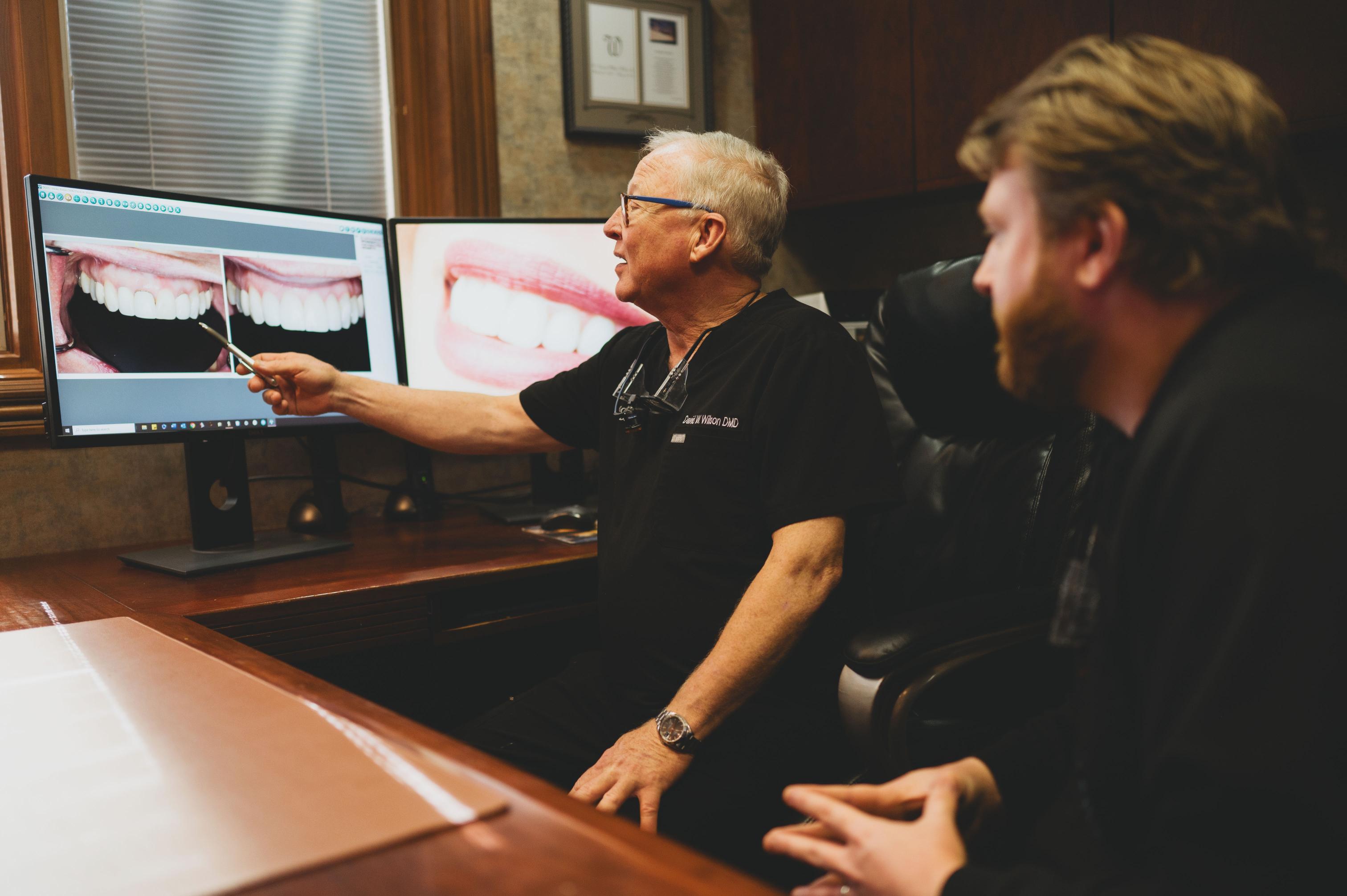
Comprehensive Solutions for TMD/TMJ Disorders


One of the most common teeth-grinding causes is known as temporomandibular joint disorder (TMD for short).
What Is TMD/TMJ?
Also commonly referred to as temporomandibular joint dysfunction, TMD is a condition that impacts the temporomandibular joints (TMJs) and the muscles and ligaments that surround them. These joints connect the mandible (lower jawbone) to the maxilla (upper jawbone), and they are responsible for all the movements your jaws make (opening, closing, and moving from side to side).
With a normal TMJ, the end of the mandible's bone remains inside the joint's socket when the mouth opens. In a patient with TMD, the end of the jawbone moves forward when the jaw opens.
Signs and Symptoms of TMD
TMD causes a wide array of symptoms, such as:
- Bruxism (teeth grinding and jaw clenching)
- Jaw pain
- Face pain
- Pain, tension, and stiffness in the neck and shoulders
- Difficulty opening and closing the mouth
- Popping or clicking noises in the TMJs
- Grinding sensations in the TMJs
- Frequent headaches and migraines
- Earaches
- Toothaches
- Tinnitus
- Malocclusion (bite problems)
- Irregular wear patterns on tooth enamel
- Excessive wear on tooth enamel
These TMD symptoms typically suggest that a patient may have an issue with their TMJ function.
Symptoms indicate the need for further evaluation.
What Causes TMD?
There are many potential causes of TMD, and often, patients have more than one factor contributing to their symptoms. Some common causes include:
- Arthritis
- Bruxism (teeth grinding and jaw clenching is a symptom of TMD and can also be a cause)
- Congenital abnormalities of the TMJs
- Jaw injury
- Malocclusion (abnormal bite)
- Open bite
- Overbite
- Underbite
- Crossbite
- Sleep apnea
- Stress
Aggravating Factors of TMD
In addition to these underlying causes, certain behaviors and habits can also lead to worsening TMD. These include:
- Chewing gum or ice
- Chewing on hard objects
- Using teeth as tools
- Poor posture
- Sleeping on your stomach
- Taking large bites of food or eating overly tough, chewy foods
- Sleep bruxism and daytime bruxism
- Daytime anxiety and stress
These factors can combine with underlying causes to complicate and worsen each case of TMD.
Comprehensive TMD/TMJ Solutions at the Center for Cosmetic & General Dentistry
There are several solutions and treatments available to address TMD, ease symptoms, and protect a patient's oral health. The treatment approach that's right for you will depend on your specific case and underlying causes. Some patients find complete relief with a single treatment, while others benefit more greatly from a combination of treatments.
Custom-Designed Nightguards
Custom-designed nightguards can help protect tooth enamel from the sleep bruxism associated with TMD. These nightguards can be shaped to keep the jaw in a comfortable and relaxed position. This helps reduce stress on the muscles and ligaments of the TMJ.
Orthodontic Treatment With Invisalign
In cases where malocclusion contributes to TMD, orthodontic treatment can help to correct the misalignment of the jawbones to achieve a more comfortable bite.
Botox
Botox injections that target specific muscle groups of the TMJs can help to relax overly tense muscles, providing relief and helping to mitigate bruxism.
Occlusal Equilibration
Also called bite adjustment, occlusal equilibration helps to balance an uneven bite by reshaping the chewing surfaces of the teeth to achieve a more equal distribution of chewing force.
Sleep Apnea Treatment
The strong correlation between obstructive sleep apnea and TMD means that addressing issues with sleep apnea can also help to resolve symptoms of TMD.
Which Solution Is Right for You? Find Out With Expert Diagnosis and Treatment
At the Center for Cosmetic & General Dentistry, we use advanced diagnostic tools to determine and help patients understand the underlying causes of bruxism. We use a combination of diagnostic imaging and physical evaluation to assess your anatomy, range of motion, and occlusion to determine the factors that might be contributing to bruxism and temporomandibular joint disorder.
While treatment for TMD can range from myofascial therapy to surgery, the treatment that is most appropriate and effective for each patient depends largely on the underlying causes of teeth grinding and TMD. Once we have performed a thorough evaluation, we can work with each patient individually to determine the best course of treatment and potential lifestyle adjustments to help address and correct the issues. Ultimately, our goal in treating TMD is to help patients find relief from painful symptoms while safeguarding their oral health.
To learn more about TMD and teeth-grinding treatment, we invite you to contact our dental office Owensboro to request a consultation with one of our experienced dentists. We can talk with you about your symptoms and work with you to find a treatment solution that provides you with jaw pain relief while protecting your oral health.
we can't wait to meet you!
Please call 270-684-3610 or request an appointment online to set up your first visit. We'll be in touch soon.